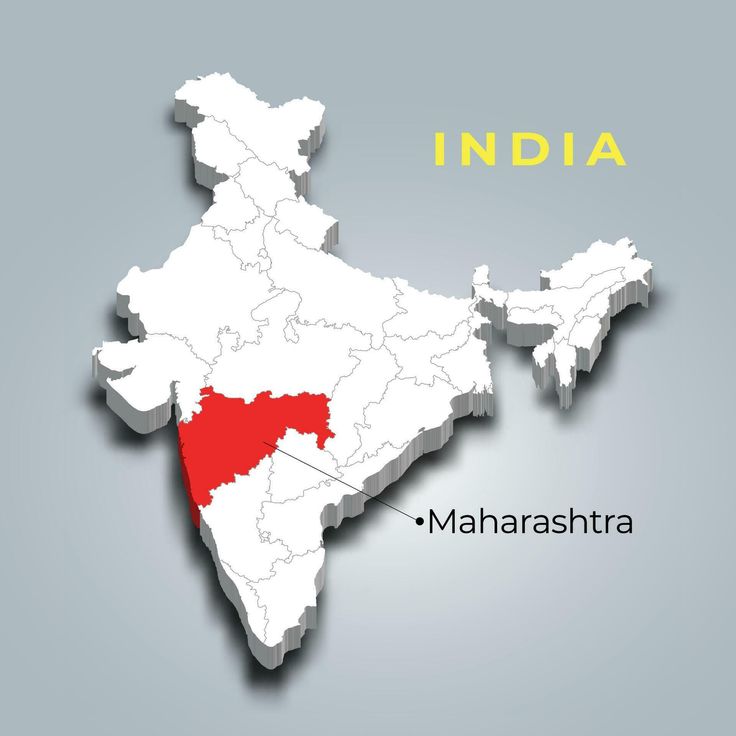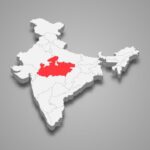Maharashtra: 10 Fascinating Facts About Its Culture, Economy, and Social Impact
Introduction
Maharashtra, located in the western part of India, is one of the most vibrant and influential states in the country. Known for its bustling cities, rich history, diverse culture, and economic importance, Maharashtra plays a significant role in shaping the nation’s landscape. From its historical monuments to its modern infrastructure, the state has earned its place as a key player in India’s growth. In this article, we will delve into the biography, daily life, impacts, history, and significance of Maharashtra, offering a glimpse of why it holds a prominent place in Indian society.
History
It has a rich and diverse history that dates back to ancient times. It was home to several powerful dynasties such as the Mauryas, Rashtrakutas, and Chalukyas, all of whom contributed to the state’s cultural and architectural legacy. The Maratha Empire, which rose to prominence in the 17th century under the leadership of Chhatrapati Shivaji Maharaj, is one of the most important historical periods in Maharashtra’s history. Shivaji’s leadership and vision for the state laid the foundation for the Maratha Confederacy, which expanded across much of India.
It also has deep historical ties with the Indian freedom struggle. Leaders such as Lokmanya Tilak, Dr. B.R. Ambedkar, and Sardar Vallabhbhai Patel played crucial roles in the country’s fight for independence. The state’s journey towards independence was marked by significant contributions in terms of revolutionary movements, protests, and sacrifices made by the people.
Daily Life and Impacts
The daily life in Maharashtra is a blend of tradition and modernity, influenced by both urban and rural lifestyles. In cities like Mumbai, Pune, and Nagpur, the pace of life is fast and filled with bustling business activities, educational institutions, and cultural exchanges. Mumbai, often referred to as the financial capital of India, is home to the Bollywood film industry and serves as a global hub for trade, commerce, and innovation.
On the other hand, rural Maharashtra is characterized by agriculture, which remains a backbone of the state’s economy. The major crops include sugarcane, cotton, rice, and soybeans. The farmers’ lives are deeply intertwined with the cycles of the seasons, with rural communities being heavily dependent on monsoon rains for their agricultural practices.
The cottage industries in Maharashtra also play an important role in the economy, especially in areas like Kolhapur (known for its leather slippers), Solapur (famous for its textiles), and Nagpur (known for oranges and citrus fruits). These industries offer livelihoods to a significant portion of the population, contributing to both local and national economies.
Key Facts
- Capital: Mumbai is the capital of Maharashtra and the financial hub of India, contributing significantly to the Indian economy.
- Historical Significance: It is home to iconic landmarks such as Ajanta and Ellora Caves, Shivneri Fort, and Gateway of India.
- Cultural Diversity: The state boasts a rich culture influenced by a mix of Marathi, Konkani, and Goan traditions. It celebrates a wide array of festivals like Ganesh Chaturthi, Gudi Padwa, and Makar Sankranti.
- Economic Powerhouse: It is one of the wealthiest states in India, contributing around 15% of India’s GDP. The state has a robust industrial sector, including automobile manufacturing, IT, and pharmaceuticals.
- Tourism: It is known for its beautiful landscapes, including the Western Ghats, hill stations like Mahabaleshwar, and beaches like Alibaug and Ganpatipule.
- Language: The primary language spoken in Maharashtra is Marathi, but Hindi and English are also widely used in urban areas.
- Literature and Arts: It has a rich tradition of literature, theater, and classical music, with figures like Vishnu Sakharam Khandekar and Bhimsen Joshi contributing to its cultural fabric.
- Political Influence: It plays a significant role in national politics, with parties like the Shiv Sena and NCP having a strong influence in the state and beyond.
- Educational Hub: The state is home to prestigious institutions like the University of Mumbai, Indian Institute of Technology Bombay (IIT-B), and Savitribai Phule Pune University.
- Wildlife and Natural Beauty: It boasts numerous national parks and wildlife sanctuaries like Tadoba Andhari, Sanjay Gandhi National Park, and Koyna Wildlife Sanctuary.
Significance
It plays an indispensable role in India’s development. It is a financial powerhouse thanks to Mumbai, which is home to the Bombay Stock Exchange (BSE), the country’s largest stock market. Maharashtra is also a leader in sectors like information technology, automobile manufacturing, and entertainment, with Mumbai being the global center of the Bollywood film industry.
Agriculturally, the state has some of the most fertile land in India, producing a wide variety of crops that feed millions of people both within and outside the country. Maharashtra’s emphasis on industrialization, coupled with its commitment to agricultural reforms, has helped it achieve remarkable economic progress.
Maharashtra’s cultural and historical contributions are also immense. The state’s festivals, such as Ganesh Chaturthi, are celebrated with enthusiasm across the country, while its art and literature have had a lasting impact on the national consciousness. Figures like Dnyaneshwar, Sant Tukaram, and Vishnu Sharma are revered not only in Maharashtra but across India for their contributions to philosophy and literature.
The state’s role in education and healthcare is also vital, with a growing number of educational institutions and healthcare facilities making it a top choice for students and professionals. Mumbai is home to top universities and research institutions that attract talent from across the globe.
Observances and Wishing
The people of Maharashtra are known for their strong community spirit and cultural pride. During festivals like Ganesh Chaturthi, the entire state comes alive with colorful processions, music, and dance, with large statues of Lord Ganesha being placed in homes and public spaces. Makar Sankranti is another festival that sees a lot of kite flying and outdoor celebrations, symbolizing the end of winter.
On a personal level, wishing people in Maharashtra during important events or festivals is a gesture of warmth and respect. People greet each other with “Ganapati Bappa Morya” during Ganesh Chaturthi or “Happy Gudi Padwa” for the Marathi New Year. These greetings not only reflect the cultural richness of the state but also highlight the unity and community that binds its people together.
FAQs
- What is Maharashtra famous for? It is famous for its rich history, Mumbai (the financial capital of India), Shivaji Maharaj, vibrant festivals, and cultural heritage.
- What are some top tourist destinations in Maharashtra? Popular tourist destinations include Mumbai, Ajanta and Ellora Caves, Lonavala, Mahabaleshwar, and Ganpatipule Beach.
- What is the capital of Maharashtra? The capital of Maharashtra is Mumbai, a major cultural, financial, and entertainment hub.
- What is the economy of Maharashtra like? It has a highly diversified economy, with key sectors such as finance, information technology, manufacturing, and agriculture.
- What languages are spoken in Maharashtra? The primary language spoken is Marathi, but Hindi and English are also widely spoken, especially in urban areas.
Conclusion
It is a state that boasts a rich blend of history, culture, economic power, and diversity. From the iconic leadership of Shivaji Maharaj to its role in modern-day finance, education, and entertainment, Maharashtra holds a special place in India’s growth. Whether it’s the daily life of its people, the significance of its festivals, or its contributions to national politics and the economy, Maharashtra continues to shape the future of India while celebrating its vibrant traditions and progressive outlook.










